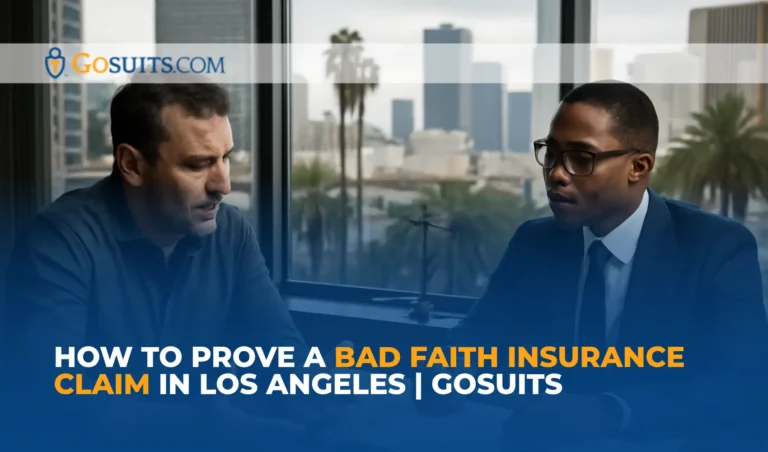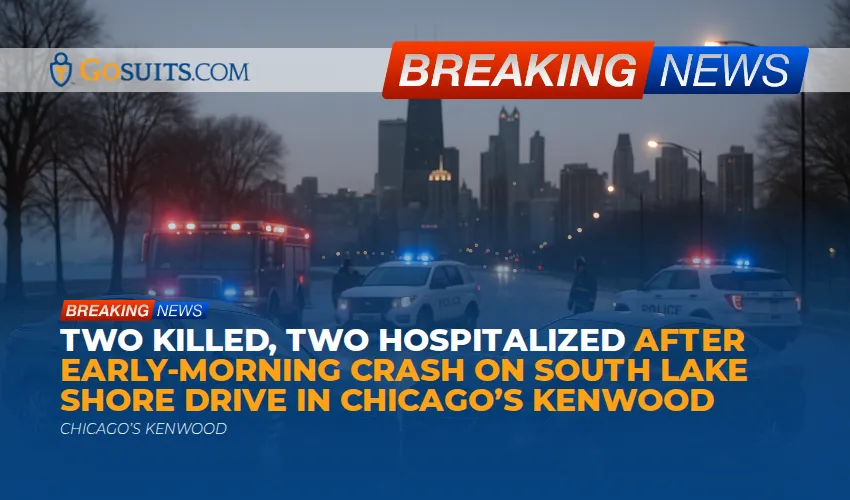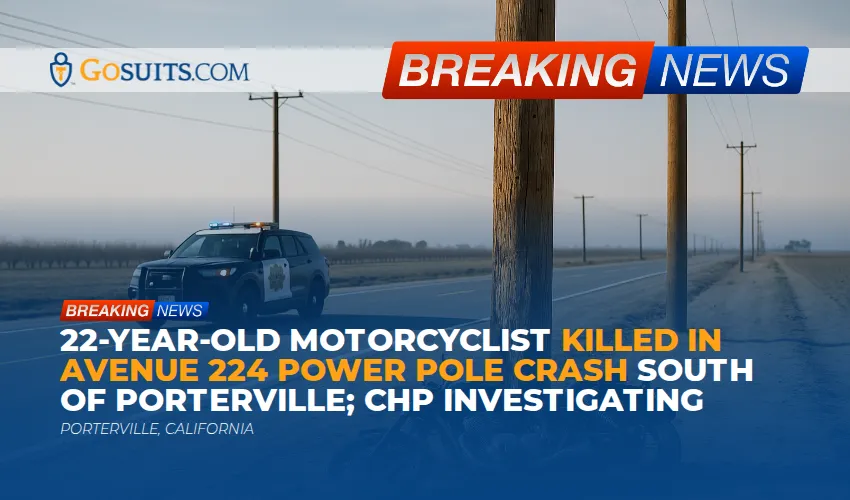- What counts as insurance bad faith in California and Los Angeles?
- How do you prove a bad faith insurance claim in Los Angeles?
- What laws and cases define bad faith in California?
- What deadlines apply to California bad faith claims (and in Los Angeles courts)?
- What evidence proves an insurer acted in bad faith?
- How do first-party and third-party bad faith claims differ in California?
- What is the duty to defend in California and how do you prove a breach?
- How does the “genuine dispute” doctrine affect your case?
- What damages can you recover in a California insurance bad faith lawsuit?
- How do you write an effective bad faith demand letter in Los Angeles?
- Should you file a complaint with the California Department of Insurance?
- Where do you sue: Los Angeles Superior Court or federal court in Southern California?
- How do California Fair Claims Settlement Practices Regulations help prove bad faith?
- What defenses will insurers raise and how do plaintiffs respond?
- What should individuals and businesses in LA do to preserve a bad faith claim?
- How do bad faith rules differ for ERISA-governed employee benefits?
- What Los Angeles–specific claim scenarios raise bad faith issues?
- How can GoSuits help with a bad faith insurance claim in Los Angeles?
- What are the key sources and references?
What counts as insurance bad faith in California and Los Angeles?
In California, every insurance policy contains an implied covenant of good faith and fair dealing. That means your insurer must act reasonably, fairly, and in good faith when handling your claim. When an insurer unreasonably denies benefits, delays payments, makes lowball settlement offers, or fails to defend you in a lawsuit, that can constitute “bad faith.” California courts recognize this as a tort separate from breach of contract, which opens the door to tort damages, including emotional distress and, in the right case, punitive damages. Foundational California Supreme Court decisions include Gruenberg v. Aetna and Egan v. Mutual of Omaha, which established and developed the duty and remedies.
For policyholders in Los Angeles, bad faith can arise in first-party claims (your own policy, like homeowners, commercial property, health, life, disability, or UM/UIM) and third-party claims (liability policies where the insurer must defend and settle claims against you). Typical Los Angeles situations include wildfire and smoke damage, burst pipe or water intrusion in condos in Downtown LA or Koreatown, auto total loss valuation disputes in the San Fernando Valley, and liability defense issues for small businesses in Culver City, Pasadena, and Long Beach.
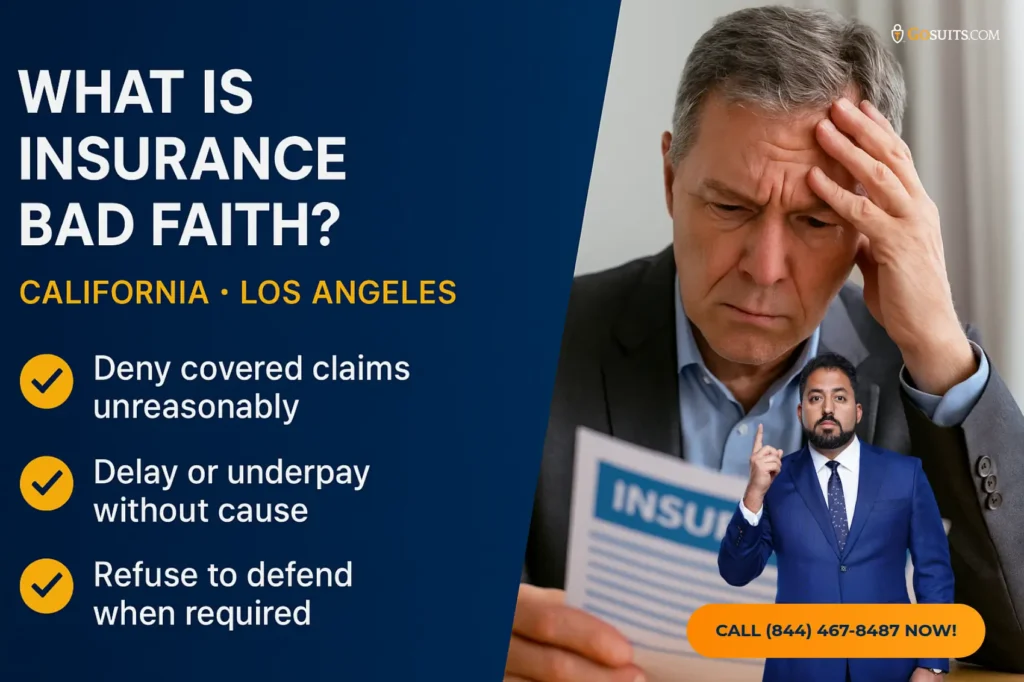
How do you prove a bad faith insurance claim in Los Angeles?
You generally need to prove two things: a breach of the policy (or a duty arising from the policy) and that the insurer’s conduct was unreasonable or without proper cause. California’s jury instructions outline the elements for breach of the implied covenant of good faith and fair dealing in the insurance context (see Judicial Council of California Civil Jury Instructions, CACI 2331; California Courts).
In practical terms, proving bad faith in Los Angeles usually involves:
- Showing policy benefits were owed: The loss was covered or there was a potential for coverage (especially for the duty to defend).
- Documenting unreasonable handling: Missed regulatory deadlines, inadequate investigation, misrepresentation of policy terms, lowball valuations, or failure to respond to settlement opportunities.
- Linking damages to the conduct: Financial harm, emotional distress, excess judgments, attorney’s fees to obtain benefits (Brandt fees), and in egregious cases, criteria for punitive damages.
For defendants (insurers) or insureds defending against a bad faith cross-claim, the path to defeating a bad faith theory often turns on demonstrating a thorough investigation, prompt and clear communication, reliance on appropriate expert opinions, and the presence of a “genuine dispute” over coverage or amount. The record you build from day one can decide this issue.
What laws and cases define bad faith in California?
Key sources of California bad faith law include:
- Implied covenant and tort remedies: Gruenberg v. Aetna Ins. Co., 9 Cal.3d 566 (1973) recognized first-party bad faith; Egan v. Mutual of Omaha Ins. Co., 24 Cal.3d 809 (1979) addressed investigation duties and punitive damages.
- Duty to defend and settle: Gray v. Zurich Ins. Co., 65 Cal.2d 263 (1966) and Montrose Chemical Corp. v. Superior Court, 6 Cal.4th 287 (1993) explain the broad duty to defend when there is a potential for coverage; Comunale v. Traders & General Ins. Co., 50 Cal.2d 654 (1958) and Johansen v. CSAA, 15 Cal.3d 9 (1975) address failures to accept reasonable settlement within limits.
- Attorney’s fees for obtaining benefits: Brandt v. Superior Court, 37 Cal.3d 813 (1985) allows recovery of fees reasonably incurred to obtain policy benefits.
- Genuine dispute doctrine: Chateau Chamberay Homeowners Assn. v. Associated Int’l Ins. Co., 90 Cal.App.4th 335 (2001); Wilson v. 21st Century Ins. Co., 42 Cal.4th 713 (2007) clarifies that a genuine dispute does not insulate an insurer if the investigation was unreasonable.
- Unfair insurance practices: California Insurance Code § 790.03(h) lists unfair claims settlement practices; however, there is no private right of action for violations alone (Moradi-Shalal v. Fireman’s Fund, 46 Cal.3d 287 (1988)). The Department of Insurance enforces these statutes.
- Fair Claims Settlement Practices Regulations: Title 10, California Code of Regulations, § 2695.1 et seq. set specific handling rules, like time limits to acknowledge and decide claims.
- Independent counsel (Cumis counsel): Civil Code § 2860 codifies the right to independent counsel when the insurer’s reservation of rights creates a conflict.
- Limitations and tolling (property claims): Insurance Code § 2071 (standard fire policy one-year suit provision) and Prudential-LMI v. Superior Court, 51 Cal.3d 674 (1990) (tolling during the claim process).
- Punitive damages: Civil Code § 3294 (clear and convincing proof of oppression, fraud, or malice; corporate “managing agent” standard).
What deadlines apply to California bad faith claims (and in Los Angeles courts)?
California has several layers of deadlines that can control your claim:
- Written contract claim: 4 years for breach of a written insurance contract (Code of Civil Procedure § 337).
- Tort bad faith claim: 2 years is generally applied to the tort claim for breach of the implied covenant in the insurance context (see discussion in Love v. Fire Ins. Exchange, 221 Cal.App.3d 1136). The accrual date can be fact-specific.
- Contractual “suit limitation” clauses: Many property policies require suit within 12 months of inception of loss under Insurance Code § 2071, subject to tolling during the claim investigation (Prudential-LMI).
- Regulatory claim-handling clocks: Under the Fair Claims Regulations, insurers must acknowledge claims within 15 calendar days, accept or deny within 40 calendar days after proof of claim, and provide updates every 30 days if still investigating (10 CCR § 2695.5(e), § 2695.7(b)).
In Los Angeles County, most civil cases are filed in the Los Angeles Superior Court and use mandatory eFiling. Local rules and departmental deadlines apply (Los Angeles Superior Court). Missing a limitation period can end your claim, so early review of the policy, any suit limitation clause, and the claim timeline is critical.
What evidence proves an insurer acted in bad faith?
Courts look at what the insurer knew, when it knew it, and how it acted. Persuasive evidence includes:
- The policy and endorsements: Full policy, schedules, exclusions, declarations, and any changes.
- Claim communications: Emails, letters, texts, portal messages, and phone logs. California regulations require accurate claim file documentation (10 CCR § 2695.3).
- Timelines against regulatory clocks: Compare insurer response dates to 15-day, 40-day, and 30-day regulatory markers (10 CCR §§ 2695.5, 2695.7).
- Investigation steps: Site inspections, recorded statements, expert reports, photographs, EUOs, and requests for information. Was the insurer’s investigation thorough and fair?
- Valuation data: For auto or property losses in LA, gather comparable sales, repair estimates from reputable shops in Burbank, North Hollywood, or Torrance, and independent appraisals.
- Settlement opportunities: In third-party cases, proof the claimant made a reasonable time-limited settlement demand within policy limits, and that the insurer failed to accept or reasonably respond. Track demand letters, deadlines, and responses.
- Reservation of rights and conflicts: Letters triggering independent counsel under Civil Code § 2860; show how conflicts affected defense decisions.
- Internal claim notes and guidelines: In litigation, discovery can obtain the claim file, internal guidelines, training materials, and supervision communications. These are central to proving motive and reasonableness.
- Damages proof: Out-of-pocket losses, loss of use, lost profits for LA small businesses, emotional distress (supported by medical or therapist notes), Brandt fee records, and, when warranted, evidence for punitive damages (managing agent knowledge under Civil Code § 3294).
How do first-party and third-party bad faith claims differ in California?
California recognizes different duties depending on claim type:
- First-party bad faith (you versus your insurer): Applies to homeowners, renters, commercial property, business interruption, life, health, disability, and UM/UIM. The insurer must reasonably investigate and pay covered benefits. Key cases include Gruenberg and Egan.
- Third-party bad faith (duty to defend and settle claims against you): Liability insurers must defend if there is any potential for coverage and accept reasonable settlement demands within limits to protect you from an excess judgment. Key cases include Gray, Montrose, Comunale, and Johansen.
Los Angeles examples:
- First-party: A Santa Monica condo owner reports water damage; insurer delays beyond 40 days without updates and undervalues repairs despite contractor estimates.
- Third-party: A Beverly Hills driver faces a bodily injury claim; the claimant sends a clear, time-limited policy-limits demand with adequate proof. The insurer does not accept or reasonably seek clarification, resulting in an excess verdict in Downtown LA.
What is the duty to defend in California and how do you prove a breach?
California’s duty to defend is broad: if the complaint or known facts create any potential for coverage, the insurer must defend the entire action (Montrose; Buss v. Superior Court, 16 Cal.4th 35 (1997)). To prove breach:
- Show a potential for coverage: Map the allegations and extrinsic facts to policy language. Even groundless, false, or fraudulent suits can trigger defense if potentially covered (Gray).
- Document the tender: Provide the complaint and a coverage letter highlighting triggering facts. Keep proof of delivery and insurer responses.
- Address reservations of rights: When conflicts arise, request independent “Cumis” counsel under Civil Code § 2860.
- Track defense harm: Record defense costs you paid, any adverse rulings, settlements lost due to no defense, and business harm from the gap.
How does the “genuine dispute” doctrine affect your case?
Insurers often argue there was a genuine dispute about coverage or the amount owed, and thus no bad faith. California law recognizes that a genuine dispute can defeat bad faith, but only if the insurer’s position was reasonable and based on a fair, thorough investigation. The doctrine does not apply if the insurer cherry-picked facts, ignored evidence, or misrepresented policy provisions (Wilson v. 21st Century).
To overcome this defense, plaintiffs in LA frequently use:
- Cross-examination of adjusters and experts: Showing biased methodologies or ignoring readily available information, including contractors in Glendale, Burbank, or Van Nuys who provided estimates.
- Regulatory mismatches: Demonstrating missed 15-day/40-day timeframes or failure to provide required explanations of denial (10 CCR § 2695.7(b)(1)).
- Inconsistent internal notes: Internal claims file entries that contradict the insurer’s litigation position.
What damages can you recover in a California insurance bad faith lawsuit?
- Contract benefits: Amounts due under the policy.
- Brandt fees: Attorney’s fees reasonably incurred to obtain the policy benefits (Brandt).
- Consequential losses: Loss of use, lost profits for LA small businesses, and other foreseeable harms caused by the unreasonable handling.
- Emotional distress: Available in the insurance bad faith tort when proven (Egan).
- Punitive damages: When there is clear and convincing evidence of oppression, fraud, or malice by officers, directors, or managing agents (Civil Code § 3294).
- Excess judgment liability (third-party): If the insurer unreasonably refuses to settle within limits and you suffer an excess verdict (Comunale; Johansen).
- Prejudgment interest: Potentially available on liquidated amounts (Civil Code § 3287).
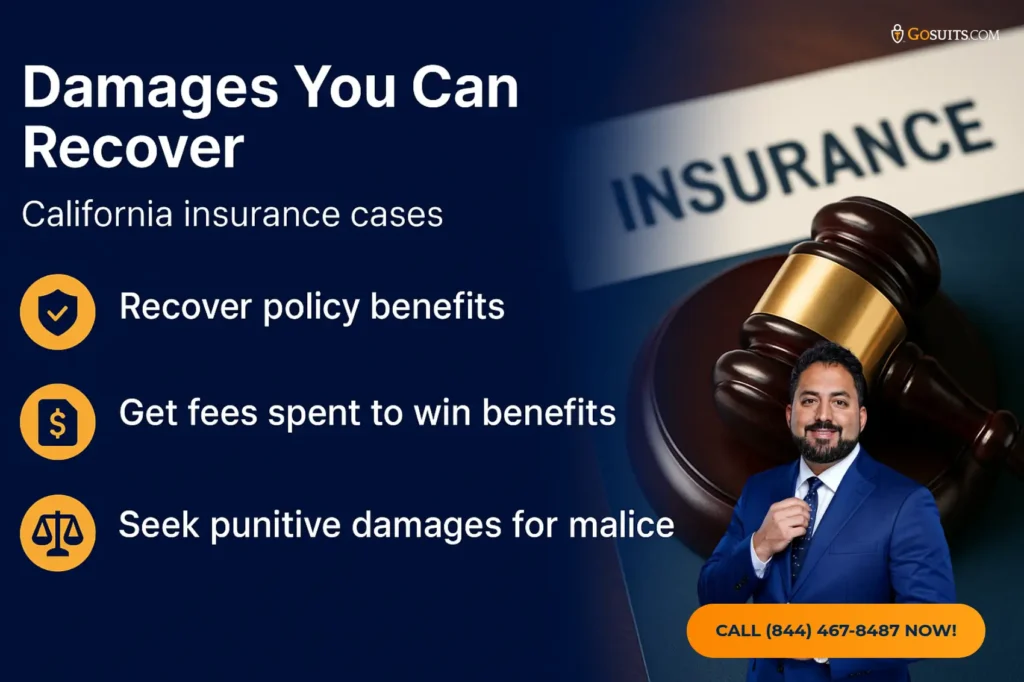
How do you write an effective bad faith demand letter in Los Angeles?
A strong pre-suit demand often frames the entire case. Consider including:
- Clear facts and chronology: Date of loss in Hollywood or West Hollywood, claim number, dates of communications, inspections, and payments.
- Policy citations: Quote specific coverage grants and relevant endorsements.
- Regulatory benchmarks: Reference 10 CCR §§ 2695.5 and 2695.7 timelines and any failures to acknowledge, investigate, explain, or pay.
- Case law hooks: For first-party, cite Egan on thorough investigation; for third-party, cite Johansen on accepting reasonable limits demands.
- Specific, supported dollar amounts: Enclose contractor estimates from Pasadena or Santa Monica, medical bills, or independent valuations from reputable LA-area sources.
- Reasonable deadline: Provide a firm, reasonable time limit and acceptable methods for payment or acceptance.
- Preservation and notice: Ask the insurer to preserve the claim file, logs, emails, and vendor communications.
Should you file a complaint with the California Department of Insurance?
Filing a complaint can prompt regulatory review and sometimes faster claim attention. The California Department of Insurance accepts consumer complaints online (CDI Consumer Help). While CDI cannot award damages in your civil case, its involvement may produce useful written responses. You can request claim communications and keep all CDI correspondence as evidence of the timeline and the insurer’s stated reasons.
Where do you sue: Los Angeles Superior Court or federal court in Southern California?
Many bad faith suits are filed in the Los Angeles Superior Court, often in Stanley Mosk Courthouse for Downtown LA cases, or branch courts in Glendale, Inglewood, or Long Beach depending on venue (Los Angeles Superior Court). If the insurer removes the case to federal court based on diversity, the matter may proceed in the U.S. District Court for the Central District of California in Downtown LA, Santa Ana, or Riverside (U.S. Courts).
Local practice tip: Track eFiling service, hearing reservations, and mandatory settlement conferences. For jury instructions, consult the latest CACI, including instructions for bad faith (California Courts CACI).
How do California Fair Claims Settlement Practices Regulations help prove bad faith?
California’s Fair Claims Regulations provide concrete standards, including:
- Acknowledgment within 15 days: Insurers must acknowledge notice of claim and provide necessary forms (10 CCR § 2695.5(e)).
- Decision within 40 days: Insurers must accept or deny a claim within 40 days after receipt of a proof of claim, or provide written reasons for the delay and updates every 30 days (10 CCR § 2695.7(b)).
- Fair valuation: Requirements for fair property and auto total loss valuations (see 10 CCR § 2695.8).
- Accurate documentation: Insurers must maintain claim files that reflect the handling and basis for decisions (10 CCR § 2695.3).
While violations of these regulations do not create a standalone private claim, they are powerful evidence of unreasonable handling supporting a common law bad faith case (Moradi-Shalal addresses private actions under the statute; plaintiffs use regulations as standards of care evidence).

What defenses will insurers raise and how do plaintiffs respond?
- No coverage: Insurer argues an exclusion applies or there is no insurable interest. Plaintiffs respond with policy interpretation canons, ambiguities construed against the drafter, and extrinsic facts creating at least a potential for coverage (duty to defend standard).
- Genuine dispute: Insurer cites conflicting expert opinions. Plaintiffs show why the investigation was one-sided or ignored critical evidence (Wilson).
- Misrepresentation or rescission: Insurer claims material misstatements justify rescission (Insurance Code §§ 331, 359). Plaintiffs contest materiality, timing, and whether the insurer waived or is estopped by its conduct; and argue that even with a coverage dispute, the investigation must be fair.
- Suit limitation clause: Insurer enforces a 12-month clause under Insurance Code § 2071. Plaintiffs invoke tolling during claim handling and delayed discovery where appropriate (Prudential-LMI).
- ERISA preemption (benefits): For employer-sponsored health or disability benefits, insurer removes to federal court and argues state bad faith is preempted. Plaintiffs evaluate ERISA exceptions, plan status, and remedies under 29 U.S.C. § 1132.
What should individuals and businesses in LA do to preserve a bad faith claim?
- Request your full policy: Obtain the complete policy and endorsements for your address in Los Angeles, Pasadena, or Encino.
- Build a timeline: Log every call, email, inspection, and decision date; compare to the 15- and 40-day benchmarks.
- Preserve communications: Save adjuster emails, text messages, and vendor reports; confirm key discussions in writing.
- Get independent estimates: In property claims, secure licensed contractor bids; in auto, obtain multiple valuations from reputable LA shops.
- Send a targeted demand: Include evidence, cite regulations and cases, and use a reasonable deadline.
- Consider CDI complaint: File if delays persist; keep CDI responses.
- Mind suit limitations: Calendar the earliest limitation date (policy and statute) and seek legal help well before it runs.
How do bad faith rules differ for ERISA-governed employee benefits?
Employer-sponsored health and disability plans are often governed by ERISA. State-law bad faith claims are generally preempted (29 U.S.C. § 1144(a); Pilot Life Ins. Co. v. Dedeaux, 481 U.S. 41 (1987)). Remedies focus on recovery of benefits and, in some cases, fees under 29 U.S.C. § 1132, not punitive damages. If your claim in Los Angeles involves an employer plan, the strategic analysis is different, and deadlines and venue may shift to federal court.
What Los Angeles–specific claim scenarios raise bad faith issues?
- Wildfire, smoke, and ash: Coverage disputes over smoke damage remediation in the San Fernando Valley or Malibu-adjacent communities; inventory valuation and ALE (additional living expenses) delays.
- Water intrusion in multi-unit buildings: Causation and matching issues in Mid-Wilshire or Downtown LA condos; overlooked code upgrades.
- Auto total loss valuation: Improper comparable vehicles for LA markets like North Hollywood or Torrance; failure to account for local taxes and fees under 10 CCR § 2695.8.
- UM/UIM demands: Delays in medical specials evaluation; low offers despite objective findings; disputes over stacking and offsets.
- Small business liability defense: Food service or retail claims in Culver City or Santa Monica; late defense appointment, limited budgets, and conflicts necessitating independent counsel.
What statistics help frame bad faith insurance issues in Los Angeles?
Context matters in a metro the size of LA. Los Angeles County’s population is approximately 9.7 million, the largest county in the United States, which correlates with a high volume of insurance claims across auto, property, and liability lines (U.S. Census Bureau QuickFacts). California’s Fair Claims Regulations set specific numeric benchmarks for insurers statewide, including:
- 15 days to acknowledge claim communications (10 CCR § 2695.5(e)).
- 40 days to accept or deny claims after proof of claim (10 CCR § 2695.7(b)).
- 30-day continuing updates while investigations remain open (10 CCR § 2695.7(c)).
These timeframes provide objective datapoints for assessing delay and reasonableness in LA-area disputes.
What practical steps help you prove bad faith from both sides’ perspectives?
- Organize the file: Keep a single digital folder with subfolders for policy, photos, estimates, medicals, and communications.
- Create a claim matrix: Row by row, list date, event, insurer obligation (e.g., 15-day/40-day rule), insurer action, and variance.
- Use targeted discovery: Request the complete claim file, activity logs, reserve changes, authority notes, vendor contracts, and adjuster training documents.
- Depose key players: Frontline adjusters, supervisors, SIU personnel, and any “managing agent” for punitive damages issues (Civil Code § 3294).
- Retain qualified experts: Claims handling standards, valuation, construction, accident reconstruction, or medical billing as needed.
For insurers and defense counsel, what steps reduce bad faith exposure?
- Document reasonableness contemporaneously: Make clear, thorough activity notes and rationale for each decision.
- Follow regulations: Track 15/40/30-day rules; send compliant denial letters with specific policy citations (10 CCR § 2695.7(b)(1)).
- Seek second looks: Use independent experts and internal claim reviews to vet close calls; correct course promptly when new facts emerge.
- Communicate options: Offer appraisal or mediation where applicable; in liability cases, analyze and respond to time-limited demands within the stated period.
What additional California doctrines influence bad faith proof?
- Assignment and excess judgments: Insureds can assign bad faith rights after an excess judgment; courts address covenant-not-to-execute arrangements and timing (Hamilton v. Maryland Casualty, 27 Cal.4th 718 (2002)).
- Notice-prejudice rule: Late notice does not bar coverage absent substantial prejudice to the insurer for occurrence policies (Pitzer College v. Indian Harbor Ins., 8 Cal.5th 93 (2019)).
- Reimbursement of defense costs: Insurers may seek reimbursement for defense of noncovered claims under a reservation of rights (Buss), but must still honor the duty to defend potentially covered claims.
How do you align your proof with California jury instructions?
California’s CACI series provides a roadmap for elements and burdens. For insurance bad faith and related claims, review:
- CACI 2330–2337: Insurance bad faith (breach of implied covenant), unreasonable denial/delay, failure to defend, failure to settle.
- CACI 2200 series: Contract formation, breach, and damages.
- CACI 3900 series: Damages instructions, including emotional distress and punitive damages standards (with Civil Code § 3294).
Available at the California Courts website (CACI). Aligning your evidence to each element and damage category improves clarity for settlement and trial in Los Angeles County.
What are examples of insurer bad faith conduct under California standards?
- Unreasonable claim denial: Denying a burst-pipe loss in West Hollywood without inspecting and despite clear photos and plumber reports.
- Delayed insurance payment in California: Holding a covered ALE payment for months without required 30-day updates after proof of loss.
- Lowball settlement offers: Offering a fraction of total loss vehicle value using non-comparable inland markets, contrary to 10 CCR § 2695.8.
- Failure to defend: Refusing to defend a Pasadena small business where the complaint pleads negligence that potentially falls within CGL coverage.
- Failure to settle within limits: Ignoring a reasonable time-limited demand with adequate proof on a serious bodily injury case in Sherman Oaks.

How does Los Angeles geography and market affect proving bad faith?
Local facts matter. Vehicle valuations should use LA-area comparable vehicles and account for local taxes and fees. Contractor rates can differ between Santa Monica, Encino, and Torrance. Traffic patterns and parking constraints affect repair timelines. Judges and jurors in Los Angeles County may be familiar with wildfire smoke infiltration or water intrusion in older buildings. Tailor your evidence to the neighborhood and market where the loss occurred.
How can GoSuits help with a bad faith insurance claim in Los Angeles?
If your claim was unreasonably denied, delayed, or underpaid in Los Angeles, a focused legal team can guide you through the proof needed under California law. GoSuits represents injured people and consumers in civil insurance disputes throughout Los Angeles County and Southern California, including Downtown LA, Hollywood, West Hollywood, Beverly Hills, Santa Monica, Culver City, Century City, Koreatown, Mid-Wilshire, Pasadena, Glendale, Burbank, the San Fernando Valley (Sherman Oaks, Van Nuys, Encino, North Hollywood), Long Beach, Torrance, and Inglewood.
- Free consultation for injury-related insurance disputes: We review your policy, claim timeline, letters, and offers, then outline next steps to position your case for the best lawful outcome.
- Technology-driven case building: GoSuits uses exclusive proprietary software to collect, timestamp, and analyze claim communications against California’s 15-day and 40-day benchmarks. This speeds up investigation and helps surface missing steps in the insurer’s process.
- Innovation with personal access: Although we leverage technology to move cases faster, every client works directly with a designated attorney. We do not route cases through case managers, and clients have unfettered access to their lawyer.
- Proven results and trial readiness: Our team has 30 years of combined experience across personal injury, first-party and third-party insurance disputes, and trials. When insurers in LA deny, delay, or lowball, trial experience helps in negotiating and, when necessary, presenting your case to a jury.
- Past cases: See selected results and case summaries at GoSuits Prior Cases.
- Practice areas: Auto collisions, pedestrian and bicycle injuries, premises liability, UM/UIM claims, property damage disputes linked to injury claims, and insurer bad faith arising from claim handling on these matters.
We focus on clear communication, early evidence preservation, and building a detailed record that maps to California’s bad faith standards.
Sources and references
- Gruenberg v. Aetna Ins. Co., 9 Cal.3d 566 (1973) (first-party bad faith recognized).
- Egan v. Mutual of Omaha Ins. Co., 24 Cal.3d 809 (1979) (investigation duties, damages).
- Gray v. Zurich Ins. Co., 65 Cal.2d 263 (1966) (duty to defend standard).
- Montrose Chemical Corp. v. Superior Court, 6 Cal.4th 287 (1993) (potential for coverage triggers defense).
- Comunale v. Traders & General Ins. Co., 50 Cal.2d 654 (1958) (duty to settle within limits).
- Johansen v. California State Auto. Assn., 15 Cal.3d 9 (1975) (settlement duties).
- Buss v. Superior Court, 16 Cal.4th 35 (1997) (defense reimbursement framework).
- Brandt v. Superior Court, 37 Cal.3d 813 (1985) (attorney’s fees for obtaining benefits).
- Chateau Chamberay HOA v. Associated Int’l Ins. Co., 90 Cal.App.4th 335 (2001) (genuine dispute doctrine).
- Wilson v. 21st Century Ins. Co., 42 Cal.4th 713 (2007) (limits of genuine dispute).
- Prudential-LMI v. Superior Court, 51 Cal.3d 674 (1990) (tolling and suit limitations for property).
- Hamilton v. Maryland Casualty Co., 27 Cal.4th 718 (2002) (assignments and excess judgments).
- Pitzer College v. Indian Harbor Ins. Co., 8 Cal.5th 93 (2019) (notice-prejudice rule and choice-of-law).
- California Insurance Code § 790.03(h) (unfair claims practices).
- 10 CCR § 2695.1 et seq. (Fair Claims Settlement Practices Regulations).
- Insurance Code § 2071 (standard fire policy suit limitation).
- Civil Code § 2860 (independent counsel).
- Civil Code § 3294 (punitive damages standard).
- Code of Civil Procedure § 337 (4-year limit for written contracts).
- Judicial Council of California CACI (jury instructions, including insurance bad faith).
- Los Angeles Superior Court (local filing and procedures).
- U.S. District Court, Central District of California (federal venue info).
- California Department of Insurance Consumer Help (complaints and assistance).
- U.S. Census Bureau QuickFacts: Los Angeles County (population and local context).
